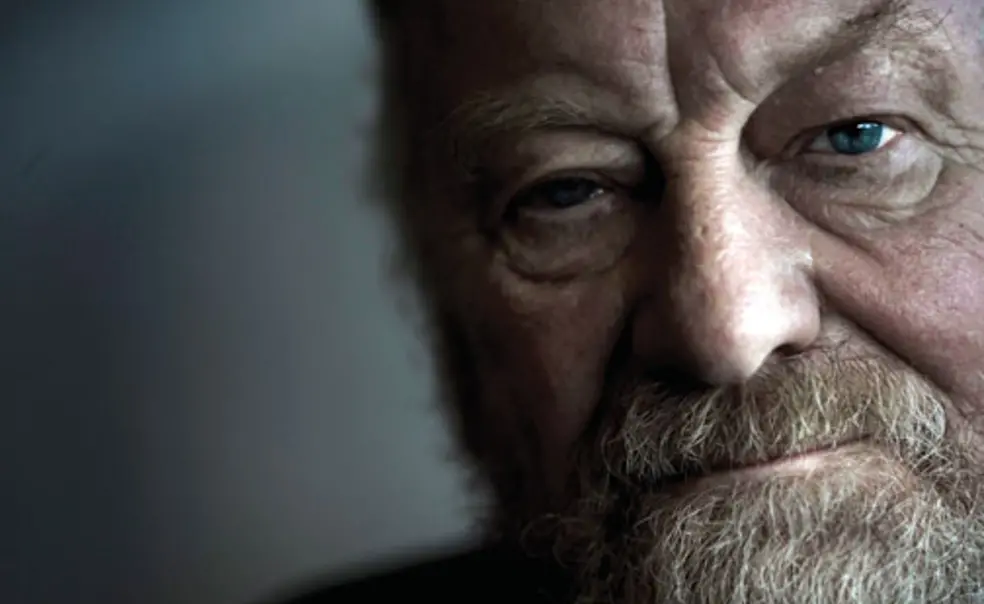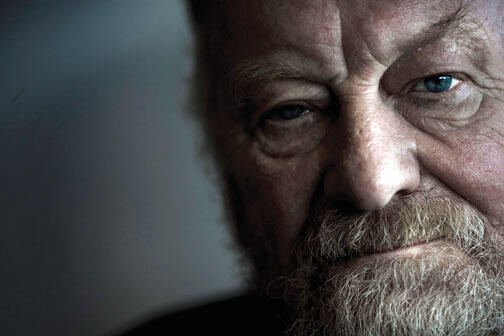Even on a campus that’s hosted more than its fair share of controversial figures, Danish cartoonist Kurt Westergaard’s Sept. 29 visit stood out as a sensitive undertaking.
Westergaard’s drawing of the Prophet Muhammad with a bomb in his turban outraged many in the Middle East and Africa in 2005. Ultimately, more than 200 people died during anti-Danish riots.
The cartoonist’s road to Princeton began in early September when an alumnus told Dan May ’11, the editor-in-chief of American Foreign Policy magazine, about Westergaard’s interest in speaking to students during a brief trip to New York. May then asked the Whig-Clio Society to co-sponsor the event.
The society accepted. “This is something that really adds to the dialogue on campus, and dialogue in general on freedom of speech, freedom of press, and the place of Islam in the Western media,” Whig-Clio president Ben Weisman ’11 said.
Westergaard has received scores of death threats, and the timing of the Princeton event — the fourth anniversary of the cartoon’s publication — further increased the security challenge. Only about 100 students and faculty who had registered in advance could attend the speech; they were thoroughly searched by police who were brought in to secure Whig Hall.
Westergaard, his cartoon projected behind him, delivered pointed commentary about what he saw as the growing threat of “Islamism” in the West.
Organizers invited Sohaib Sultan, coordinator for Muslim life, to offer a reflection after the speech. “My opinion as a devout Muslim is that I find the cartoons to be an offensive portrayal of a figure that is very revered in Islam,” Sultan said.
In the end — and in contrast with Yale, where Westergaard’s appearance the next day was met with student demonstrations — the Muslim Student Association and other groups decided not to protest the event.













2 Responses
John Lamb ’55
9 Years AgoAttributing controversial Danish cartoons
I’m hardly qualified to speak on the topic, but it is worth noting that it is sad to see PAW (Notebook, Nov. 4) inadvertently abetting the erroneous myth that it was Kurt Westergaard’s work in Jyllands Posten that caused riots in the Islamic disapora when in fact it was three additional cartoons provided by a Danish resident Muslim cleric/provocateur who then “shopped” all the cartoons until riots eventually ensued where for months, prior to his inserted, falsely attributed, and inflammatory material, his assiduous efforts throughout the Middle East to stir up a reaction went for naught. In short, Westergaard’s cartoons were recognized for what they were: mildly sardonic commentary on fringe beliefs, and as such, tolerated if not enjoyed by Muslims and infidels alike. The Danish Muslim cleric/provocateur’s work was seen as offensive and inflammatory by both Muslims and infidels alike.
It would not be too great a burden to make this (I think) important distinction and clarify our understanding of the situation.
John H. McElroy ’56
9 Years AgoLessons on Islam
I loved the exquisite equivocation in David Walter ’10’s piece on Danish cartoonist Kurt Westergaard’s visit to campus (Notebook, Nov. 4): “Westergaard’s drawing of the Prophet Muhammad with a bomb in his turban outraged many in the Middle East and Africa in 2005. Ultimately, more than 200 people died during anti-Danish riots.” Who are these “many”? They wouldn’t be Muslim fanatics by any chance, would they? Surely no Muslim would ever kill anyone over a cartoon!
As an undergraduate, I took the course on Islam offered by Professor Philip K. Hitti and read his abridgment of his magisterial 822-page History of the Arabs from the Earliest Times to the Present, first published in 1937, which was in its fifth edition when I sat in that great teacher’s classroom in the 1950s. Professor Hitti proudly taught us of medieval Islam’s achievements in mathematics and architecture, chemistry and medicine, technology and astronomy. But I also remember he taught us, “Islam is a religion, Islam is a state, and Islam is an army.” Muhammad’s theology was not Christ’s with regard to enemies. We are courting mayhem when we dance around that unpleasant truth and refuse to take it into account because it’s politically incorrect.